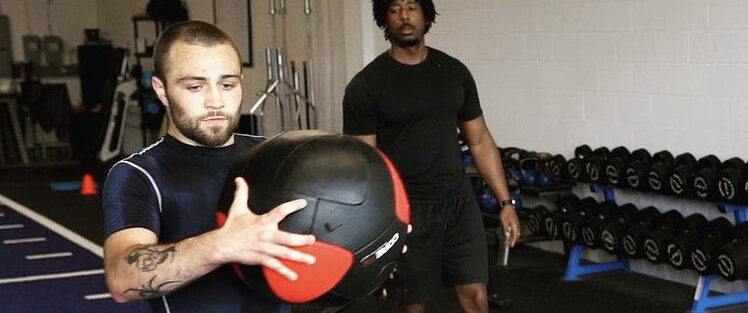Is it a waste of time to perform throwing work for athletes who mainly jump or sprint?
Repetitive jumping and sprinting actions build muscular, powerful lats and spinal erectors that enable us to run faster and jump higher, throwing the pelvis into extension with each leap and bound. But these muscle groups, which are located on the backside of the body, can become so developed that they overpower the muscles on the front side of the body- namely, the pecs and abdominal group.
In this case, it is no surprise that over the course of a sports season athletes can develop what is referred to as an, “anterior pelvic tilt,” where the hips are tilted forward, placing compressive forces on the low back. This doesn’t usually present an immediate problem, but it can be a cause for concern down the road if we do not work to bring the hips back to a more neutral posture.
The simplest solution to this is to perform fast, moderate to heavy throws. Throws help to counter the effect that the lats and erectors have on the pelvis by building enough fast-twitch tone in the glutes and abdominals to normalize the position of the hips and combat anterior pelvic tilt.
Be sure to include a variety of throws with as many different angles and vectors as you use in your speed and jump program. Also, get creative by performing throws that simultaneously involve powerful lower-body actions.


